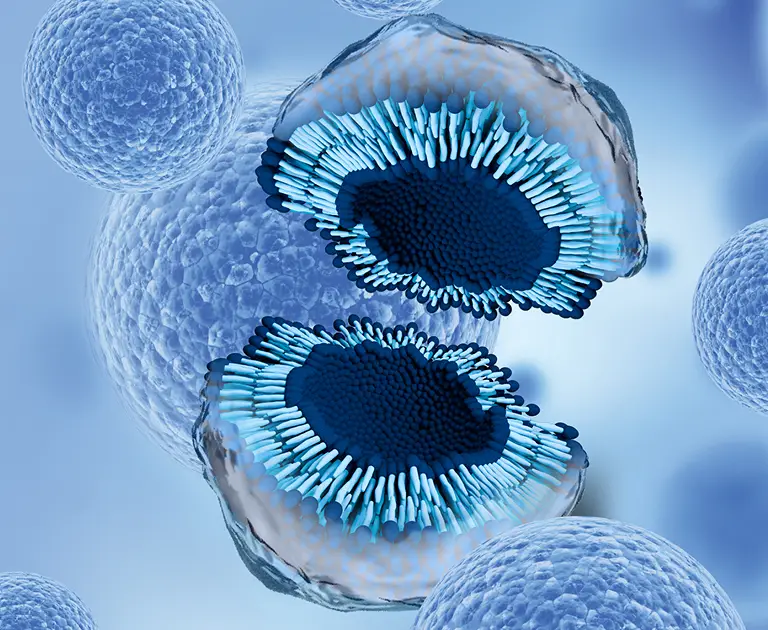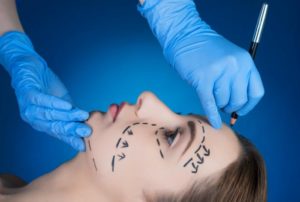Exosomes in Skincare: What Are They and Do They Really Work?
In the ever-evolving world of aesthetic medicine, exosomes are emerging as a powerful tool in regenerative skincare. But what exactly are exosomes, how do they benefit the skin, and are they worth the growing hype?
This blog explores the science behind exosomes, how they are used in modern treatments, and where they fit in Dr. Ali Soueid’s approach to advanced skin rejuvenation.
What Are Exosomes?
Exosomes are tiny, extracellular vesicles naturally secreted by stem cells. Measuring about 30–150 nanometres in size, they carry powerful biological signals such as proteins, RNA, lipids, and growth factors. These act as messengers between cells, triggering repair processes, modulating inflammation, and promoting tissue regeneration.
In skincare, exosomes are derived from human mesenchymal stem cells and are used topically after treatments to amplify healing and enhance skin rejuvenation.
Key Benefits of Exosome Therapy in Aesthetics
- Stimulates collagen and elastin production
- Reduces redness, inflammation, and downtime
- Improves skin tone, texture, and hydration
- Speeds up healing post-laser or microneedling
- Helps repair photodamage and fine lines
How Are Exosomes Used in Aesthetic Medicine?
Exosomes are most commonly used as topical treatments, often paired with microneedling, laser resurfacing, or radiofrequency (RF) devices like Morpheus8. These treatments create microchannels in the skin, allowing the exosomes to penetrate more effectively.
Clinical applications include:
- Skin rejuvenation – Improving texture, tone, and hydration
- Post-procedure recovery – Reducing downtime and inflammation after lasers or RF
- Pigmentation and acne scarring – Supporting a more even complexion
- Hair restoration – Stimulating dormant hair follicles when used with PRP
How Are Exosomes Used in Skin Treatments?
Exosomes are most effective when applied after treatments that create micro-channels in the skin, allowing deeper penetration. These include:
- Microneedling
- Morpheus8 RF microneedling
- CO2 laser resurfacing
- Chemical peels
- PRP (Platelet-Rich Plasma)
After the procedure, exosome-rich serums are applied to the skin where they penetrate and activate healing responses. Most patients report quicker recovery, less swelling or redness, and visibly improved results.
For example, pairing Morpheus8 with exosomes has been shown to significantly reduce post-treatment downtime while improving skin firmness and texture.
What Does the Evidence Say?
While still an emerging field, early studies and case series suggest exosome treatments:
- Increase collagen and elastin synthesis
- Reduce inflammation and redness
- Support faster healing after procedures
- Improve skin tone and firmness over time
Ongoing clinical trials are investigating their efficacy in treating melasma, rosacea, and post-acne scarring. Though promising, more large-scale studies are needed before exosomes become a mainstream treatment.
Clinical studies in aesthetic medicine are growing, and early results are promising. Many practitioners have already integrated exosomes into their advanced skin protocols for enhanced healing and results.
For a scientific overview, refer to:
For a deeper dive, see this research overview on exosomes in dermatology.
Exosomes vs PRP: What’s the Difference?
Many patients ask whether they should opt for PRP (Platelet-Rich Plasma) or exosomes. Both are regenerative treatments, but there are key differences:
| Feature | PRP (Platelet-Rich Plasma) | Exosomes |
|---|---|---|
| Source | Your own blood | Donor stem cell culture (lab-prepared) |
| Composition | Growth factors from platelets | Growth factors + RNA messengers |
| Variability | Patient-dependent | Consistent, lab-controlled |
| Application | Injected or applied post-procedure | Topical (after microneedling or laser) |
Exosomes are particularly beneficial for patients who cannot or prefer not to use autologous (self-derived) treatments, or when a more potent regenerative boost is needed.
Dr. Ali Soueid’s Approach to Exosome Skincare
Dr. Ali Soueid integrates exosome therapy as part of a bespoke skin rejuvenation plan, especially when:
- Patients undergo Morpheus8 RF microneedling or CO2 laser resurfacing
- There is a need for faster recovery and enhanced results
- Addressing fine lines, sun damage, or post-inflammatory pigmentation
- Combining with topical retinoids, peptides, or antioxidants for maintenance
Exosomes are typically recommended as a course of treatments, spaced 4–6 weeks apart, depending on your skin goals.
Final Thoughts
Exosomes represent one of the most exciting frontiers in regenerative skincare. While they are not a magic bullet, when used correctly and combined with evidence-based treatments, they can offer visible, long-lasting improvements in skin quality.
Patients considering exosomes should always seek care from a qualified plastic surgeon or dermatologist with experience in regenerative aesthetic medicine.
To explore how exosomes could benefit your skin, schedule a consultation with Dr. Ali Soueid at Cosmestica Aesthetic Plastic Surgery.





